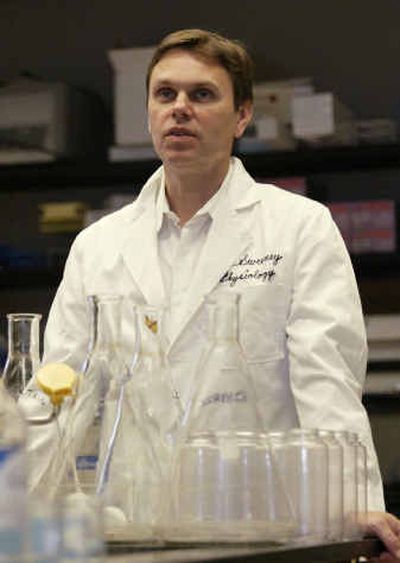The next athletic revolution

Tainted by suspicions of drug use, this summer’s Athens Games may nevertheless mark one of the last Olympics before another inglorious milestone – genetic enhancement in sports.
Recent developments may soon make it possible to genetically stimulate muscle growth in the limbs of athletes who want to jump higher, throw farther or punch harder than ever before. As the technology progresses, it also may become possible to boost oxygen uptake, cardiac output and metabolic efficiency.
Gene therapy experiments have produced mice and rats sporting muscles up to 50 percent bigger than normal, with corresponding gains in strength.
Researchers believe humans could achieve similar results, and expect to begin testing the new technology in the next few years on patients devastated by muscular dystrophy. After those trials, the next stage would be to offer the treatment to elderly people in danger of losing their independence to muscle wasting.
“There’s reason to think that this is going to happen,” said physiologist H. Lee Sweeney of the University of Pennsylvania Medical School.
To athletes whose careers hinge on eking out a little more strength or shaving off mere hundredths of a second, tales of mighty mice may sound awfully tempting. So tempting that officials at the World Anti-Doping Agency, which tests athletes for performance-enhancing drugs and tries to prevent their use, has already added genetic enhancement to its list of prohibited methods of improving performance.
Not that the agency could stop so-called “gene doping.” Like the technology itself, testing for genetic modification is still in its infancy – and it may never be easy to detect.
Most bioethicists would accept the idea of using gene therapy to help an octogenarian carry a sack of groceries or climb a flight of stairs. But what’s fair in sports?
Would it be acceptable for a vigorous, middle-aged man to undertake gene therapy when he can’t pump as much iron as he used to, or when he loses something off his vertical leap in pickup basketball games? Would it be OK for pro athletes, whose livelihood depends on playing well?
Gene therapy pioneers conceived of it as a treatment for serious diseases, such as cystic fibrosis and hemophilia, that can result from a single misspelling in the 3-billion-letter genetic code. The idea is to attack illness at its roots, correcting or compensating for DNA misprints rather than treating disease symptoms with drugs. Using the foreign gene as a recipe, the body would become its own drug factory, creating and delivering a lifetime’s supply of therapy.
Such an approach would have numerous advantages over today’s drug-based therapies. Even the most effective drugs disappear from the body over time, and they often generate unwanted side effects.
But while gene therapy offers hope, there also have been stunning disappointments. Horrified physicians have even watched patients die as their immune systems waged mortal combat against the products of their new genes or the vehicles used to deliver them.
The challenges remain daunting, though one application of gene therapy – the enhancement of muscular strength in the arms and legs – may be on the way to practical application. In recent experiments, researchers have injected mice and rats with a virus that has been genetically engineered to carry a gene for a biochemical messenger called IGF-I.
When the body produces IGF-I naturally, the molecule stimulates the growth of muscle fibers. So when the virus infects muscle cells, hijacking the body’s genetic machinery so it produces even more IGF-I, serious buffness results.
Golden retrievers suffering from a genetic disease very similar to muscular dystrophy have been helped significantly by other experimental treatments. In those tests, the dogs received a gene for a protein similar to the one that is defective in muscular dystrophy.
That’s great news for people who have the disease, but doesn’t alleviate concerns about athletes.
“It may sound OK, technically, but it’s not,” said Theodore Friedmann, a pediatrician at the University of California San Diego School of Medicine who has advised the World Anti-Doping Agency about gene therapy. “It’s highly risky, in addition to being very unlikely to work very well.”
Bioethicists worry that unscrupulous trainers will soon attempt to set up underground gene therapy labs, luring elite athletes before legitimate researchers have developed and tested safe treatment protocols. It’s happened already with performance-enhancing drugs such as EPO, which boosts the blood’s ability to carry oxygen. It became apparent in the late 1980s that athletes were getting their hands on the drug when young, healthy cyclists began dropping dead of heart attacks, their blood too thickened to flow adequately.
“It’s a crazy situation,” said John Hoberman, a University of Texas professor and author of an upcoming book about the abuse of hormone drugs.